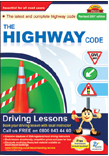The driving test for a car is designed for you to show you understand and can demonstrate your knowledge of the Highway Code and the theory of driving safely. Throughout the test your examiner will be looking for an overall safe standard of driving, including when you are carrying out the set exercises.

Before applying for the practical test:
Before applying for the practical test, you need to pass the driving theory test. Your practical driving test will start with an eyesight check and some vehicle safety checks. You will then start your car practical driving test which will include some specific driving manoeuvres.
The driving part of your test will last about 40 minutes. Throughout the practical test your examiner will be looking for an overall safe standard of driving, including when you are carrying out the set exercises. You can make up to 15 driving faults and still pass the test (16 or more results in failure). However, if you commit one serious or dangerous fault you will fail the practical test.
The practical driving test (car):
The Driving Standards Agency (DSA) is now able to offer tests outside the normal test times at a number of test centres. This provides customers a wider range of appointments over an extended working day.
Car practical test is generally available at all permanent test centres. Saturday and weekday evening tests, subject to resources being available, are offered at a premium rate. Non premium rate tests are available at various times between 7.30 am and 3.27 pm Monday to Friday.
The car driving test is straightforward and has been designed to see if you:
The practical test will include an eyesight check (if you fail this, your test will not continue). The eyesight test requires you to read a number plate that is a certain distance away.
After the eyesight test, you will be asked two vehicle safety checks. You will then be examined on your general driving and on two reversing exercises.
The reversing exercises will be chosen from:
These are basic safety checks that a driver should carry out to ensure the vehicle is safe for use. Although some checks may involve the candidate in opening the bonnet to identify where fluid levels would be checked, pupils will not be asked to touch a hot engine or physically check fluid levels.
As vehicle technology advances, more and more vehicles are being equipped with electronic diagnostic systems, which inform the driver of the state of the engine fluid levels and tyre pressures. It will be acceptable for a candidate to refer to the vehicle information system (if fitted) when answering questions on fluid levels or tyre pressures.
Candidates will be asked two questions, one 'show me' and one 'tell me'. One or both questions answered incorrectly will result in one driving fault being recorded.
What happens during the car driving practical test?
During the driving test the examiner will give you directions which you should follow. Test routes are designed to be as uniform as possible and will include a range of typical road and traffic conditions. During the practical test, the examiner will ask you to carry out set exercises.
Throughout the test you should drive in the way your instructor has taught you. If you make a mistake, don't worry about it, it might be a less serious driving fault and may not affect your result. The examiner will be looking for an overall safe standard of driving.
You can make up to 15 driving faults and still pass the test (16 or more results in failure). However, if you commit one serious or dangerous fault you will fail the test. If at any time your examiner considers you to be a danger to other road users your test will be stopped.

Before applying for the practical test:
Before applying for the practical test, you need to pass the driving theory test. Your practical driving test will start with an eyesight check and some vehicle safety checks. You will then start your car practical driving test which will include some specific driving manoeuvres.
The driving part of your test will last about 40 minutes. Throughout the practical test your examiner will be looking for an overall safe standard of driving, including when you are carrying out the set exercises. You can make up to 15 driving faults and still pass the test (16 or more results in failure). However, if you commit one serious or dangerous fault you will fail the practical test.
The practical driving test (car):
The Driving Standards Agency (DSA) is now able to offer tests outside the normal test times at a number of test centres. This provides customers a wider range of appointments over an extended working day.
Car practical test is generally available at all permanent test centres. Saturday and weekday evening tests, subject to resources being available, are offered at a premium rate. Non premium rate tests are available at various times between 7.30 am and 3.27 pm Monday to Friday.
The car driving test is straightforward and has been designed to see if you:
- Can drive safely
- Know the highway code and can demonstrate this through your driving practical test
The practical test will include an eyesight check (if you fail this, your test will not continue). The eyesight test requires you to read a number plate that is a certain distance away.
After the eyesight test, you will be asked two vehicle safety checks. You will then be examined on your general driving and on two reversing exercises.
The reversing exercises will be chosen from:
- Reversing around a corner
- Turning in the road
- Reverse parking
These are basic safety checks that a driver should carry out to ensure the vehicle is safe for use. Although some checks may involve the candidate in opening the bonnet to identify where fluid levels would be checked, pupils will not be asked to touch a hot engine or physically check fluid levels.
As vehicle technology advances, more and more vehicles are being equipped with electronic diagnostic systems, which inform the driver of the state of the engine fluid levels and tyre pressures. It will be acceptable for a candidate to refer to the vehicle information system (if fitted) when answering questions on fluid levels or tyre pressures.
Candidates will be asked two questions, one 'show me' and one 'tell me'. One or both questions answered incorrectly will result in one driving fault being recorded.
What happens during the car driving practical test?
During the driving test the examiner will give you directions which you should follow. Test routes are designed to be as uniform as possible and will include a range of typical road and traffic conditions. During the practical test, the examiner will ask you to carry out set exercises.
Throughout the test you should drive in the way your instructor has taught you. If you make a mistake, don't worry about it, it might be a less serious driving fault and may not affect your result. The examiner will be looking for an overall safe standard of driving.
You can make up to 15 driving faults and still pass the test (16 or more results in failure). However, if you commit one serious or dangerous fault you will fail the test. If at any time your examiner considers you to be a danger to other road users your test will be stopped.








